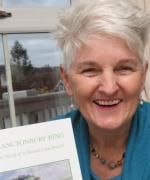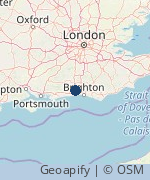Cakes & Ale: 'A Full English' in your 17th century 'local'?
Dr Janet Pennington SpeakerNet Sponsor
- Regions:
- West Sussex, East Sussex, Surrey, Kent
- Notice Period:
- Emergency (maybe less than one week's notice)
- Type:
- Professional
- Fee:
- Paid: £85-£125
- Category:
- History
- Updated:
- 23rd September 2024
- Tagged:
- Inns | Pubs | Food History | Travel Anecdotes
re we still enjoying what our ancestors ate in the morning in inns and alehouses? What were they having in 1600?
This talk will cover much of Sussex, as well as surrounding counties. The differences between the types of drinking establishments from 1550 to 1750 will be explained and illustrated, while documentary and other sources will provide evidence for the food and drink retailed and consumed within them, showing how these provisions were supplied. We will hear the reactions from travellers (not always good!) and local customers to what was on offer, together with the lifestyles of the innkeepers, both male and female. See my website: sussexhistorytalks.co.uk
Views: 681 | Enquiries: 0About Dr Janet Pennington
I am an independent historian, giving illustrated talks in Sussex (sometimes nipping into Surrey and Kent) for 35 years. I have a PhD in early-modern Sussex inn and tavern history and give more general talks about the history of English inn signs as well as those in Sussex and south-east England. I am at present looking at the art of the inn sign. My MA dissertation is about Elizabethan courtier (or con-man!) Sir Thomas Sherley of Wiston House (West Sussex). I worked as Archivist at Lancing College, also teaching local history and palaeography in adult education at the University of Sussex. I am President of the Brighton & Hove Archaeological Society, a member of the Wealden Buildings Study Group, and am particularly interested in the ritual protection of the home. I hold a Diploma in English Local History and speak on a variety of subjects connected with Sussex and the south-east, some covering other parts of England - see the variety of talks listed on my website - www.sussexhistorytalks.co.uk - I have given many talks using ZOOM and can also host sessions. Due to my interest in and knowledge of inns, taverns and alehouses and all manner of drinking establishments in England, I have been in more pubs than most people - mainly for research purposes...
Other Talks on SpeakerNet by Dr Janet Pennington
- English Inn Signs: their local and regional significance
- Chanctonbury Ring: the story of a Sussex landmark
- Witches, Warlocks & Wellingtons: the ritual protection of the home
- Shops & Shopping: the history of the small shop through the ages
- Sussex Inn Signs and their History
- Travel in the Past: the problems and pleasures of the journey
- The Pubs & Breweries of Steyning, West Sussex
- An Archaeological Childhood in Sussex
- Steyning Scandals: the secrets of a Sussex market town, 1547-1947
- Wiston House, Sussex: the story of its Elizabethan owner Sir Thomas Sherley
- Sidesaddle Travels in England with Celia Fiennes [1690s]
- An Illustrated Walk Around Old Steyning Town
- The Art of the Inn Sign
- On Your Feet: boots and shoes in history
Send a message to the speaker
If you are interested in this talk and wish to contact the speaker, please complete the following form:

